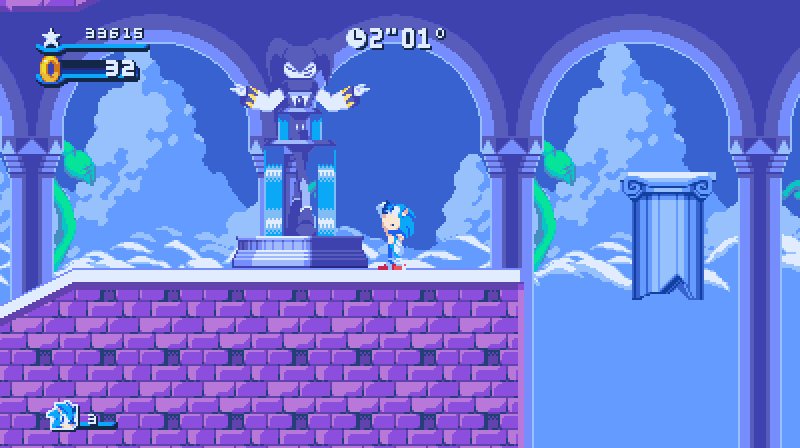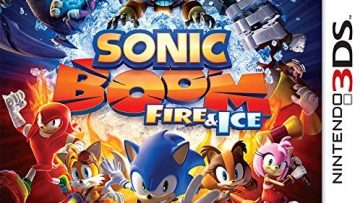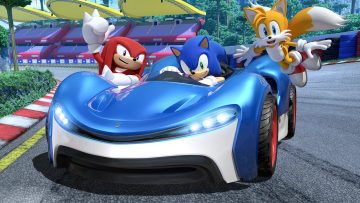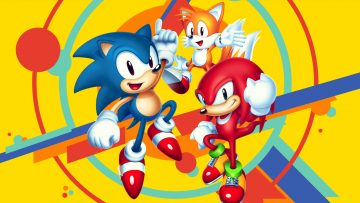
SAGE 2018: Petit Hedgehog Developer Chengi Interview
Out of all this year’s submissions, Petit Hedgehog stands out as one of the most stylish. With it’s flashy and colorful presentation, it’s sure to catch any player’s eye. We were given the time to discuss the game’s ins and outs with developer Chengi. You can check out the interview in full below.
TSSZ: Pleasure having you, Chengi. To begin, let’s give readers the lowdown on who you are.
Chengi: Glad to be on board; I’ll keep my introduction brief. Art and Game Design are my primary hobbies — the first hobby being what I actually pursued as a field of study, whereas the second hobby is just something I’ve had a passion for, and I’ve always wanted to find a balance for both interests and put them together.
TSSZ: Could you describe what Petit Hedgehog is, and what you aim to do through it?
Chengi: Petit Hedgehog is basically “my” attempt at a Sonic fangame, but I wanted to make something that both felt good and looked good. Classic Sonic’s core gameplay, to me, has always been able to be broken down into having responsive controls and good level design, and Modern Sonic is all about being flashy with its presentation. I essentially wanted to take what were my favorite things about the franchise and combine the two and hopefully create a seamless, satisfying game “hybrid” as a result.
TSSZ: Now it’s my understanding that this is your first big project. How did you initially get into the game-making scene?
Chengi: I’d say this is arguably my biggest project, as up until 2016 it was entrely a solo effort. But my roots in game-making start as early as 2009 with a bunch of one-week original Game Maker games that I’d be way too embarassed to even have be shown the light of day in the current year. But around that time is when I started to dive into stuff like making mods and levels for existing projects — notably the already existing Doom-to-Sonic conversion, Sonic Robo Blast 2. Heck, I’d be lying if I said that a lot of PH’s development has been influenced by my enjoyment for that game and its community. I gave Sonic an air dash for a reason, Y’know? In addition to that, I made a lot of levels for other games like BlitzSonic and Sonic GDK — most of which ended up being stuff that I never ended up releasing, and I can safely say they weren’t up to the established standards, anyways. Then throughout college, I spent a good deal of my time investing myself in editorials, videos, and other forms of media surrounding game design, and that in tandem with my enjoyment for games lead me to where I am right now. I suppose waiting a few years to make my own thing was probably the better idea in the long run.
TSSZ: How did the idea for Petit Hedgehog originally strike you?
Chengi: PH is actually something I’ve taken in so many directions, that to say how it started is difficult. Believe it or not, my initial goal was just to make a 2D Sonic that felt like you were playing something like Sonic Adventure, omitting a third dimension entirely. That didn’t end well. I had realized that the way Sonic Adventure handled the transition of 2D Sonic to 3D was complicated enough already, and to basically reverse those steps would not only create more work than I’d deem necessary, but it’d also probably create a lot of shortcomings. I then decided that the primary thing I wanted to focus on — not only in gameplay, but for setting my goals — was to go beyond the initial design draft and not focus on creating something reminiscent of an existing source material, but rather to expand upon the source material and stretch my creative limits. There’s still a lot of borrowing of mechanics and concepts as that’s just the nature of fangames, but what I wanted to achieve is a seamless expansion of the elements of a typical Sonic game that the player is already familiar with, just with an extra dash (no pun intended) of visual flair to really sell that satisfaction to the player. And in a roundabout way, I achieved my initial goal, I suppose. Sonic Adventure is a game that is mostly about the presentation in conjunction with an established world on top of familiar gameplay. Maybe I’m not giving myself enough credit with that last statement. I’m still proud of my work, I achieved a goal, so regardless, that’s what matters to me.
TSSZ: What would you say you’ve found to be most challenging? Most rewarding?
Chengi: I suppose my biggest struggle was building up the motivation to rebuild a good portion of my existing spaghetti-code so that it could work better with the changes I was making to the engine. Earlier builds of PH are examples of how bad my coding was. I wanted to correct all of that, even if it was going to be difficult. The most rewarding thing for me? Avant Garden Zone. I poured my heart and soul into making that level enjoyable, beautiful, and structurally unique. I can only hope people enjoy playing it as much as I enjoyed making it.
TSSZ: Where can readers find you?
Chengi: I’m the most active on my Twitter, @Chenginerd. I also have a Patreon so that people, if they want to, can support me and my work in the future.
TSSZ: Welp Chengi, it’s been real. I can’t wait to see more, and I hope development continues moving on swell.
Chengi: Likewise. I’m glad to have had the spotlight with you guys. I appreciate it. And I hope people enjoy playing my game, alongside all of the other fantastic games at this year’s SAGE. The Sonic Fangames community is a wonderful community to be a part of, and to see others devote their passions to a long-term, or even short-term project for people to enjoy is one of the most commendable efforts I can possibly think of. Thank you guys so much.





